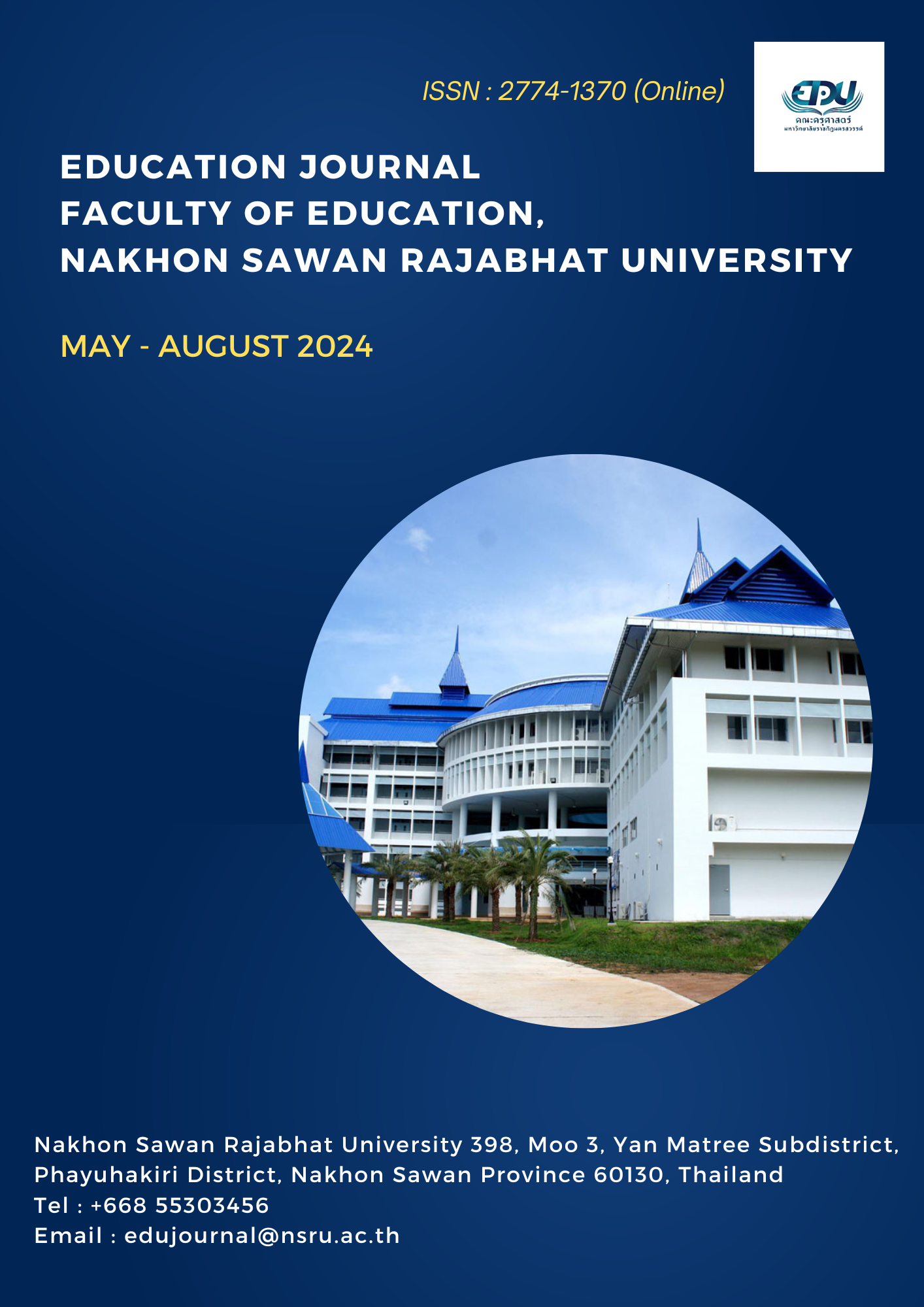Developing of Virtual Classroom to Enhance Problem-Solving Skills in Solving Math Problems for Prathomsuksa 3 Students
Main Article Content
Abstract
The purpose of this research were 1) to create and determine the effectiveness of the virtual classroom to promote problem-solving skills about Mathematical Problem Solving of Grade 3 2) to compare the problem-solving skills before and after learning of Grade 3 students learning with a virtual classroom about mathematical problem solving, 3) to study the satisfaction of Grade 3 students learning with a virtual classroom about mathematical problem solving. The target group is grade 9 students at Banthunghao School who will study in the 2023 academic year, by purposive sampling. Research tools consist of 1) a virtual classroom on solving math problems 2) a problem-solving skills test it has a difficulty value between 0.20-0.80 and a discriminatory power between 0.20-1.00, 3) virtual classroom learning satisfaction questionnaire solving math problems has an accuracy value between 0.50 -1.00 and 4) Problem solving skills assessment, the difficulty value is between 0.20-0.80 and the discriminatory power is between 0.20-1.00. The statistics used in data analysis were mean and standard deviation. The results of the research showed:
1) results of creating and determining efficiency of a virtual classroom to promote problem-solving skills about mathematical problem solving of Grade 3 students who were taken to experts to check suitability, it was found that the suitability of the virtual classroom is very good and the results of calculating the efficiency of the virtual classroom were 80.67/82.25. 2) comparative results of problem-solving skills of Grade 3 students learning with a virtual classroom about mathematical problem solving before studying were 18.44 and after studying were 26.11, was higher than before, 3) satisfaction evaluation results of Grade 3 students studying in the virtual classroom about mathematical problem solving, satisfaction was the highest level (μ = 4.86).
Downloads
Article Details

This work is licensed under a Creative Commons Attribution-NonCommercial-NoDerivatives 4.0 International License.
References
คมสัน อินทะเสน, และคณะ. (2560). ความพึงพอใจของประชาชนต่อการให้บริการขององค์การบริหารส่วนตำบลนาหว้า อำเภอภูเวียง จังหวัดขอนแก่น. วิทยานิพนธ์หลักสูตรปริญญารัฐศาสตร์บัณฑิต(รัฐศาสตร์). มหาวิทยาลัยมหามกุฏราชวิทยาลัย.
ชัยวัฒน์ สุทธิรัตน์. (2557). การพัฒนาหลักสูตร ทฤษฎีสู่การปฏิบัติ. กรุงเทพฯ: วีพรินทร์ (1991).
ณัฐชนันท์ จันทคุปต์, และคณะ. (2565). การพัฒนาห้องเรียนเสมือนบนเครือข่ายคอมพิวเตอร์ ของสถาบันพัฒนาครู คณาจารย์และบุคลากรทางการศึกษา สำหรับพัฒนาทักษะที่จำเป็นของครูในศตวรรษที่ 21. นครปฐม: สถาบันพัฒนาครู คณาจารย์ และบุคลากรทางการศึกษา.
ทิศนา แขมมณี. (2555). ศาสตร์การสอน: องค์ความรู้เพื่อการจัดกระบวนการเรียนรู้ที่มีประสิทธิภาพ. กรุงเทพฯ: จุฬาลงกรณ์มหาวิทยาลัย.
นภัสนันท์ สุวรรณวงศ์. (2559). การพัฒนาการจัดการเรียนรู้แก้ปัญหาเชิงสร้างสรรค์ เรื่องการออกแบบการเรียนการสอนและการเขียนแผนการจัดการเรียนรู้โดยใช้ห้องเรียนเสมือนจริงบนคราวด์คอมพิวติ้ง. วิทยานิพนธ์การศึกษามหาบัณฑิต (เทคโนโลยีการเรียนรู้และสื่อสารมวลชน). มหาวิทยาลัยเทคโนโลยีพระจอมเกล้าธนบุรี.
พรนภา เตียสุทธิกุล. (2556). การวัดระดับเจตคติในการดำเนินงานด้านการสาธารณสุข. วารสารวไลยอลงกรณ์ปริทัศน์ มนุษยศาสตร์ และสังคมศาสตร์. 8(4): 214-225.
พัฒนา พรหมณี, และคณะ. (2563). แนวคิดเกี่ยวกับความพึงพอใจและการสร้างแบบสอบถามความพึงพอใจในงาน. APHEIT JOURNAL. 26(1): 59-66.
ภวิสาณัชช์ ศรศิริวงศ์. (2564). ห้องเรียนเสมือนจริง. วารสารศึกษาศาสตร์ มหาวิทยาลัยศิลปากร. 19(2): 81-93.
รศรงค์ พัฒนาอนุสรณ์, และคณะ. (2557). การพัฒนาบทเรียนอีเลิร์นนิ่ง เรื่อง การเลือกซอฟต์แวร์ให้เหมาะสมกับงานสำหรับชั้นมัธยมศึกษาปีที่ 4. วารสารโครงงานวิทยาการคอมพิวเตอร์และเทคโนโลยีสารสนเทศ. 1(2): 29-35.
โรงเรียนบ้านทุ่งเฮ้า. (2563). รายงานผลการประเมินตนเองของโรงเรียนบ้านทุ่งเฮ้า ปีการศึกษา 2563. น่าน: ผู้แต่ง.
วนัสนันท์ ชูรัตน์. (2564). การพัฒนาทักษะการแก้ปัญหาอย่างสร้างสรรค์โดยใช้รูปแบบการแก้ปัญหาอย่างสร้างสรรค์ร่วมกับอินโฟกราฟิก สำหรับนักเรียนชั้นมัธยมศึกษาปีที่ 5 เรื่อง กรด-เบส. วิทยานิพนธ์การศึกษามหาบัณฑิต (วิทยาศาสตร์ศึกษา). มหาวิทยาลัยนเรศวร.
สถาบันส่งเสริมการสอนวิทยาศาสตร์และเทคโนโลยี. (2555). การวัดผลประเมินผลคณิตศาสตร์. กรุงเทพฯ: ซีเอ็ดยูเคชัน.


